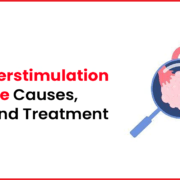What Is TESE & Its Success Rate
TESE – Male infertility is common today and can be attributed to various underlying factors. The working of the male reproductive system is highly complex. Any malfunctioning tissue or blood vessel can lead to hurdles in the pregnancy journey.
Luckily, medical advancements have made it possible to treat the cause of male infertility. One of the most successful procedures is TESE.
But who is eligible to take help with this procedure?
In this article, we will talk about TESE and its success rate. We will discuss in detail the procedure of TESE, its side effects, and the complications associated with TESE.
Semen is not Sperm.
During sexual intercourse or masturbation, when a man has an orgasm, he ejaculates semen. A semen sample contains sperm cells responsible for fertilising the egg. Sperm cells are not visible to the naked eye. There is a possibility that the sperm cells are absent. Another reason can be poor sperm morphology or low sperm count in the semen sample. It is where the TESE procedure comes to your rescue.
What is TESE?
TESE stands for testicular sperm extraction. It is a medical procedure to collect sperm cells directly from your testicles when, for some reason, they do not come out when you ejaculate.
Other procedures that fall under the category of sperm retrieval processes are
- Testicular Sperm Aspiration (TESA)
- TESA with mapping
- Percutaneous Epididymal Sperm Aspiration (PESA)
- Micro Epididymal Sperm Aspiration (MESA)
- Microdissection TESE (microTESE)
These are also known as sperm harvesting procedures. Each of them helps solve different problems related to infertility.
But this article focuses on TESE, so let’s understand the need for this sperm retrieval process.
What is the Need for TESE?
TESE is needed to solve the problem of both obstructive and non-obstructive azoospermia (zero sperm in the semen). These two factors are responsible for a large number of male infertility cases.
Obstructive Azoospermia
It is a condition in which testicles function normally and produce sperm, but they are absent in the semen due to some blockage.
Obstructive azoospermia can be caused by primary testicular failure, non-reconstructed vasectomy, or the blockage is there by birth.
Non-obstructive Azoospermia
This is a condition in which no sperm cells are produced due to the abnormal functioning of the testicles.
So, we can say that testicular sperm extraction proves to be a boon when
- The testosterone levels are normal, but the testes cannot produce sperm cells.
- An obstruction or blockage in the reproductive tract due to injury or infection prevents sperm from entering the penis.
- Even after treating azoospermia, the sperm count has not improved significantly.
The sperm cells that are retrieved from the TESE procedure will be frozen. Then, whenever the doctor needs them for fertility treatment, they can use the frozen sperm cells to fertilise the egg. The TESE procedure has significantly reduced the need for donor sperm.
Using Retrieved Sperm for Normal Conception
The important thing to note here is that these retrieved sperm cells can’t be used for normal conception.
When the sperm cells are collected directly from the testes, they can’t swim through the vagina. So, when placed inside the uterus, they won’t be able to reach the fallopian tube to fertilise the egg.
These sperm cells can only be used in fertility treatment where fertilisation occurs on a petri dish in a laboratory.
Preparation for TESE
You may want to know what precautions to take before the TESE procedure. Here are a few suggestions from the doctors:
- Don’t take blood-thinning medications 5 days before the TESE procedure. These include Aspirin, Advil, Motrin, etc.
- Nicely shave your genital area to minimise the chances of infection.
- Shower with an antibacterial soap on the day of the TESE procedure or the night before.
TESE Procedure
This delicate procedure is carried out under general anaesthesia so that the patient does not have a painful experience.
With the help of a biopsy, active areas of sperm will be located. Then, one or two incisions (cuts) will be made in the scrotum. After that, a small portion of tissue is removed from the testes. This sample portion will be dissected to separate the sperm from the sample to store it and be used to fertilise the egg. The incision during the TESE procedure is closed with the help of sutures.
It takes around 20 to 30 minutes to carry out the TESE procedure.
Post-TESE Care
After TESE, your doctor will ask you to wear a special type of underwear called scrotal support for 2 weeks. You can also use tight-fitting underwear.
- Bear in mind that a tissue was collected through incision from your testicles. So, rest is mandatory!
But how much rest do you need post-TESE?
- Resting for at least 2 to 3 days at home after the procedure is completed is best.
- Don’t push yourself if you still feel discomfort or pain while doing something.
- You are advised to shower the next day after the TESE procedure.
- But be careful; the wound should not come in contact with water. It is because the wound is closed with the help of absorbable sutures and should not be removed. Also, the chances of testicular infection might increase.
- A healthy, balanced diet will help fast recover the scrotal wound.
- Lay an extra focus on consuming fluids during the recovery period.
- Don’t engage in activities like jogging, swimming, or weight lifting for at least 2 weeks after the TESE procedure.
- Medications will be prescribed to alleviate pain and prevent infection.
- It is safe to place ice packs on the scrotum every few hours for the first 2 days.
- Consider joining back at work after 2 weeks post TESE. Contact your IVF experts immediately if you feel discomfort after 14-15 days.
Rigorous activities can be taken up after 10 to 14 days, depending on your recovery rate.
Post-TESE Complications
You might face the following complications after the TESE procedure:
- Normal bleeding
- Swelling
- Bruising
- Slight discolouration of the scrotal skin
- A thin, clear, and pink-coloured discharge from the incision for the first few days
There is nothing to worry about these post-TESE symptoms. They will gradually fade away as the incision spot heals.
Risk Factors Associated with TESE
A highly experienced specialist does this treatment. Even though this procedure is quite safe, you may encounter severe symptoms after the treatment. Some of the risk factors associated with this sperm retrieval process are:
- Skin infection
- Side effects related to anaesthesia
- Testicle infection following biopsy
- Damage to testicle
- No sperm retrieval in the semen
- Sperm does not react well when stored frozen for the ICSI procedure.
The good news is that risks like testicular damage are rare, but there is always a chance. So, make sure to follow all the post-TESE recovery guidelines religiously.
Success Rates of TESE
The success rates of the TESE procedure depend on some important factors, namely.
- Amount of sperm that was retrieved during TESE
- Whether the retrieved sperm is alive
- The quality of the sperm in terms of the shape and size of the sperm cell should be optimal.
To fertilise the egg, the shape and size of the head, midpiece, and tail of the sperm should be normal.
The success rate also depends on the man’s medical history.
Fertility experts claim that the sperm retrieval rate is higher in men with obstructive azoospermia. The retrieval rate is more than 70 to 80%.
This high success rate means the testes function normally and can produce sperm. There is some obstruction that is preventing the sperm from coming out.
Once the underlying cause is treated or TESE is carried out, fertilisation can occur successfully. Provided that the sperm is alive and has normal sperm morphology.
However, in men with non-obstructive azoospermia, the retrieval rate is between 20 to 50%. Because the testes are unable to produce sperm or produce less sperm than required, in this situation, the complexities increase, and TESE success rates decrease.
Another contributing factor is the man’s genetic background. The success rate for men with genetic conditions like Klinefelter syndrome is 10% to 20%.
The success rate of the sperm retrieved during TESE in helping couples achieve pregnancy with an ICSI procedure is around 55%.
Other factors that affect Success Rates
● TESE success rates also consider the surgical specialists’ skills and expertise.
● Many times, the role of lifestyle is neglected when discussing infertility treatment options.
But the truth is your diet, managing stress levels, and involvement in physical activities also impact the success of the TESE procedure.
TESE Costs in Srinagar, India
The cost of the TESE procedure varies based on the location of the clinic, the complexity of the underlying condition, available facilities, and the expertise of the medical specialists.
The TESE cost in Srinagar, India, is between 50,000 and 60,000 INR.
However, some fertility centres like Imprimis IVF and Srinagar offer affordable treatment options.
Why Choose Imprimis IVF?
TESE procedure warrants experience and skills. Imprimis IVF Srinagar offers even more than that.
Offering the TESE procedure at an affordable price means we maintain the quality of our services. We at Imprimis IVF are a team of skilled and highly experienced professionals. A round-the-clock support system for our patients in need. Equipped with state-of-the-art infrastructure and machinery, we turn dreams into realities.
Final Words
Infertility among couples is becoming more and more common these days. Fingers are typically pointed at women for not being able to conceive. But now we know that men, too, can be responsible for infertility. All the information on the internet can only give you an overview of the entire process of TESE. For more information, visit a trusted fertility specialist.










